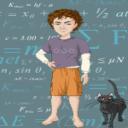Yahoo Answers is shutting down on May 4th, 2021 (Eastern Time) and beginning April 20th, 2021 (Eastern Time) the Yahoo Answers website will be in read-only mode. There will be no changes to other Yahoo properties or services, or your Yahoo account. You can find more information about the Yahoo Answers shutdown and how to download your data on this help page.
Trending News
Hollow sphere = zero internal gravity.?
This is a continuation of a question asked by Sammy : - - -"If there was a hollow sphere the size of Earth floating through space, where would the gravity be the highest?
The shell is made of iron, a meter thick. The inside is just vacuum like the outside. @
http://uk.answers.yahoo.com/question/index?qid=201... - - -
.
My question :
. ..Assuming such a sphere could be stable and has no rotation, now imagine, a glass marble inside the sphere, one kilometre from centre point, no initial rotation or motion.
The hollow sphere has no gravity. ( current understanding. ) I don't seem to be able to get my head round this, I keep seeing the iron sphere (has mass) as having a gravitational effect inside the hollow, thus the marble tends toward the inner surface of the shell and if I do manage to block this from my mind, the marble tends toward the centre point.
How does the marble behave? Does it stay stationary? Or what? Any ideas? Or does anyone know what actually would happen to the marble?
Nomadd : yes, this happens in my mind, but without gravity, what is the cause of the marble drifting?
Morningfox : assuming as you said, " nothing else in the universe " what causes the drifting?
I'm confused enough without including externals.
WOW! What's with all the thumbs down, if you trigger happy guys have something to say, I'd be grateful for clarification, " put up, or shut up."
Mike : your answer doesn't sit well with me, I'm really not sure about the " no internal gravity " but I do accept this is " current understanding " so those giving you thumbs down really should be explaining themselves.
.
Who quote: - - -" You have asked a very similar question and picked an answer" - - -
Me:
Which question do you refer to? Link please.
Who quote:
- - - (i,e space itself is pushing, not the object pulling) - - -
Me :
Wouldn't this also lead to the marble being pushed to the mass(shell)?
I am interested in your views. Could you give me the link to where Einstein says the body( marble ) in a hollow sphere will settle at centre point.
Apparently I gave the wrong link, sorry for that, Sammy's question was at. http://uk.answers.yahoo.com/question/index;_ylt=Ao...
7 Answers
- WhoLv 78 years agoFavorite Answer
Depends whether you follow newton or einstein
einstein says that mass "curves space" and that this causes the "illusion" of gravity
Since space is still curved whether you are inside the sphere or not, and dont matter where you are inside that sphere, then you are still subject to the same forces of "gravity" as a result of that curvature
I.e the closer you get to the centre the greater the curvature therefore the stronger the force of gravity due to the sphere
THAT IS - you still feel gravity at the centre - cos it cant be "cancelled" out.
(ie moving towards the centre changes nothing about the curvature of space cos the sphere itself is creating that curvature. Since the mass of the sphere aint changing then the curvature CANT change. And it dont matter a damn WHERE you are the curvature is ALWAYS the same. All thats happening is that as you get closer to the the centre curvature increases therefore gravity increases)
All the answers following newton MUST assume that the curvature of space caused by the large object changes depending where you are when you are inside it. If you believe einstein this is absurd.
So the answer must be - strongest gravity is at its centre therefore ball will move to the centre
(By the way - I think einstein is correct)
Hope you read this
You have asked a very similar question and picked an answer
Go check with a real physicist who knows einstein - cos the answer you have picked (the site refered to) is based on newton, and ignores what EINSTEIN said gravity was
(gravity is an illusion created by the curvature of space
The illusion is that it appears the large object is "pulling" the smaller object towards it
the reality (according to einstein) is that the curvature of space caused by the large object is "pushing" the smaller one toward it
(i,e space itself is pushing, not the object pulling --- (Bit like a wave pushing a surfer))
The site refered to refers to the "law of gravity" - in reality there is no such law- there is an equation whereby you can calculate the force of gravity which people refer to as a "law", but that equation is NOT applicable in all situations
just as we use newtons "laws" of motion, but these are also not applicable in all situations.)
Additional -
marble being pushed to the shell? of course not
It would get to the centre and stay there (it might oscillate aroung the centre but would eventually become static)
the curvature is in space/time itself, its the mass of the object that creates that curvature. not the physical shape/size of it
Think of this
IF gravity was zero at the centre then there could be no such things as black holes, supernove etc
THESE are created by the enormous pressures created as stuff gets crushed towards the centre. Sure there is loads of stuff there, but without gravity. that stuff cant create any pressure at all cos it would have no weight - Its GRAVITY that creates the weight and therefore the pressure, so if there aint no gravity there cant be any pressure.
If it did this then supernova etc could not happen.
(ignore thumbs up/own - there are just a lot of dumb..sses around
- orpheus_swordLv 58 years ago
So everyone but Mike is very incorrect.
If your sphere is uniform and perfectly spherical, and if there are no outside forces ---- meaning you need to completely isolate this sphere from all other forces. Of course your sphere will still experience forces from nearby objects and what not, but if we're speaking in hypotheticals. But under those conditions, then the marble will stay exactly where you put it. It will have no gravitational force whatsoever by any part of the sphere. You could place the marble even inches away from one edge, and this will still be true.
Why?!?
Easy. It's called Gauss's law, and originates from the fact that gravitational force decreases as 1/r^2. So, while you may be closer to one bit (and therefore have more force), that means there is more mass off to the other side. Again, suppose you're very close to one edge, to the right of the marble is s small amount of the sphere, but it's close. To the left of the marble is a great deal of the sphere but is far away. These two effects will *EXACTLY* cancel, and has to do with the geometric form of the gravitational force.
Here's a good reference for Gauss's Law:
http://en.wikipedia.org/wiki/Gauss's_law_for_gravi...
In fact, they mention your exact scenario.
- DrDaveLv 78 years ago
The logical answer would be if the sphere and marble were perfectly uniform, the attraction to the outer sphere would be equal in all directions if the marble were placed exactly in the center. If not, the marble would be attracted to the closest point of the inside of the sphere. This is of course if the sphere were not moving in any direction and in space where no other objects were close enough to have an effect. The FACT is, everything IS moving in the Universe.
- Mick WLv 78 years ago
taking the mass of the earth to be 5.967906882^24
g = gravity as 9.81 ms-2
G = gravitational constant as 6.67^-11
r = radius of the earth 6370 Km
g x r^2/G = the mass of the earth
reducing the radius by 1 meter and recalculation the centre section and deducting it from the original gives a mass of 3.74795^18 for an earth sized shell 1 metre thick, of the same material.
g = G x mass of sphere/ (radius of the earth minus 1 metre)^2
gives its gravity as 0.00000161 ms-2
- How do you think about the answers? You can sign in to vote the answer.
- MorningfoxLv 78 years ago
This is a standard problem in college physics or math. The marble would just drift around randomly. That is it WOULD, if there was nothing else in the universe. In the real universe, the sphere with the marble inside it, would be in some orbit around a star or galaxy. The sphere would go around as if it was a point at its center. The marble, since it's not at the center, would feel *slightly* different forces and would go on a slightly different path. So it would eventually end up pressed up against the inside of the sphere. (Interesting problem how long that would take -- about a year, I think.)
==========
The drifting would be caused by random Brownian motion, driven by thermal radiation inside the sphere, maybe the occasional loose atom or molecule (if its not a perfect vacuum), or even just quantum noise. Once the marble gently contacted the inside of the sphere, Van der Waals force would come into play.
Did some calculations for a sphere in orbit around the sun -- I get 0.32 years for the marble to move 1 km, just from gravitational forces.
As for the General Relativity considerations -- the inside of the sphere is STILL (just like in the Newtonian case) a flat gravity field. The marble is not pushed in any direction by the sphere's gravity, and will not rest at the center. Only non-gravity forces, and gravity from objects beside the sphere, will have any effect.
- 8 years ago
This question was first answered by Isaac Newton in his 1687 masterpiece "Principia Mathematica", arguably the most important science book ever written. Inside a uniform hollow sphere there is no resultant gravitational force, and so your marble would stay exactly where you put it, wherever it was in the sphere. You worry about the gravitational pull of a nearby wall of the sphere, but this is exactly cancelled out by pull of the much larger, but further away, wall in the opposite direction.
Source(s): "Principia Mathematica" (Book 1, proposition 70, theorem 30) - NomaddLv 78 years ago
The only place the marble would stay still would be the exact center. It would drift toward the nearest point in the shell from anywhere else.





